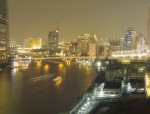- Joined
- Oct 5, 2013
- Messages
- 522
- Points
- 28
I have been messing around with time Lapse pro on my note 3 lately. It's pretty darn cool, and I got some nice footage. I most recently time lapsed a laser doing the liquid sky effect (circle instead of line though). I can post that if people want, but it didn't come out as cool as expected.
My question now is, how can I long exposure time Lapse? I want to take a time Lapse of the sky. But I need long exposure to get the stars on camera. So how can I do this?
My question now is, how can I long exposure time Lapse? I want to take a time Lapse of the sky. But I need long exposure to get the stars on camera. So how can I do this?





